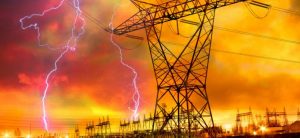19 Oct The Electricity (Amendment) Bill, 2020 and the Crisis in Power Sector (GS 3, Economics, The Hindu, Indian Express)
For the overall development and prosperity of an energy-dependent country like India, the availability and accessibility of energy supplies at affordable costs are decisive.
The electricity sector could be classified into three sections: Generation, Transmission, and Distribution. Generation is regarding the power production process using different sources of energy. Transmission is regarding carrying out high voltage power from generation plants to distribution sub-stations through the transmission grid. In the distribution, electricity is finally transferred from the sub-station to individual consumers through a distribution network.
Till now the electricity sector is regulated by a central law, The Electricity Act 2003. The acts provide for the Central regulatory Commission (CERC) at the central level and State Electricity Regulatory Commissions (SERCs) at state levels. The function of these commissions includes determining and regulating tariffs, issue of licences for transmission, distribution and electricity trading and adjudicating upon disputes within their respective jurisdiction.
The distribution sector, which is mostly under the state-owned distribution companies (Discoms) for long been the cause of distress in the power sector. Discoms are consistently running losses for several years and have a high level of debt. The reasons for the huge losses could be counted as costly long-term Power Purchase Agreement (PPA), underpricing of tariff, inefficient operation, poor infrastructure, leakages Including theft and billing issues, loopholes and weakness in the tariff policies of the state government, etc.
(Power Purchase Agreement – PPA or Electricity Power Agreement is basically a contract between two parties one which generates the electricity (Power generation companies) and the other who is looking to purchase the electricity to further sell or distribute i.e.Distribution companies- Discoms).
Most of the Discoms are facing high Aggregate Technical and Commercial losses (AT&C). AT&C loss measures the overall performance of the power sector system as it includes both technical and commercial losses. It is the gap of input energy into the system and the units for which payment is collected.)
The Ujwal Discom Assurance Yojana (UDAY) was launched in 2015 to bring financial and operational turnaround of discoms. Under UDAY, 15 states took over debt of their discoms worth Rs 2.1 lakh crore. However, the losses of distribution utilities have increased by 69% between 2017-18 (Rs 29,452 crore) and 2018-19 (Rs 49,623 crore).
The Electricity (Amendment) Bill of 2020: In the backdrop of huge losses, The Electricity (Amendment) Bill, 2020 could be a game-changer. It seeks to dismantle the monopoly of a state and delicensing the power sector. It also seeks increased competition by enabling private companies in the distribution sector. Moreover, Consumers will have the option of choosing a service provider and switching their power supplier. It is noteworthy here to mention that privatization of discoms in Delhi has reduced AT&C losses significantly from 55% in 2002 to 9 % in 2020. Another welcome feature of the Bill is the strengthening of the regulatory architecture of the sector. This will be done by appointing a member with a legal background in every electricity regulatory commission and strengthening the Appellate Tribunal for Electricity. This will ensure faster resolution of longpending issues and reduce legal hassles.
The bill also encourages green energy. It proposes a penalty for non-compliance with the renewable energy purchase obligations. This will ensure India moving towards non-fossil fuel and helping it to fulfill its international climate change commitments. Some other significant features of the Bill such as the creation of an Electricity Contract Enforcement Authority to supervise the fulfillment of contractual obligations under the power purchase agreement, cost-reflective tariffs, and provision of subsidy through DBT are commendable. Early passage of the Bill is critical as it will help unleash a pathbreaking reform for bringing efficiency and profitability to the distribution sector.
Way Forward: Open Access for purchasing power from the open market will provide more options to consumers as they have options for telecom services. It should be implemented across all states. Barriers in the form of cross-subsidy surcharge, additional surcharge, and electricity duty being applied by states should be reviewed.
The tariff of the power sector has to be relooked. It should be reflective of the average cost of supply. A reduction in the cross-subsidy is needed which could be done by making discoms autonomous and if they are allowed by regulatory authorities to revise tariffs without interference from the states.
There is a need for a proper refund of input tax credit for discoms, which could be possible if electricity is kept under GST. It will reduce the cost of power for discoms. Electricity is essential so should be kept under the lower rate of GST.
The share of renewable energy in power sector has to be increased to mitigate the challenges of climate change. Rooftop solar plants Has to be encouraged. Presently the installed capacity of a rooftop solar plant is 5-6 GW, well short of 2022 target.
Under technological solutions, smart grids, smart meters, etc. should be installed to reduce AT&C losses and restore the financial viability of the sector.
plutus ias daily current affairs 19 Oct 2021
Plutus IAS Current Affairs Team Member




No Comments